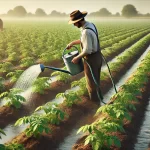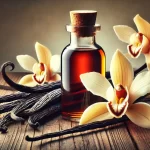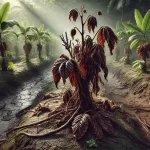Water is a vital resource for vanilla cultivation and a determining factor in the health and productivity of the plant. Understanding the water needs of vanilla and applying efficient irrigation strategies can make the difference between a successful crop and one with growth problems or diseases. Below, we will explore how much water vanilla needs and what the best practices for its irrigation are.
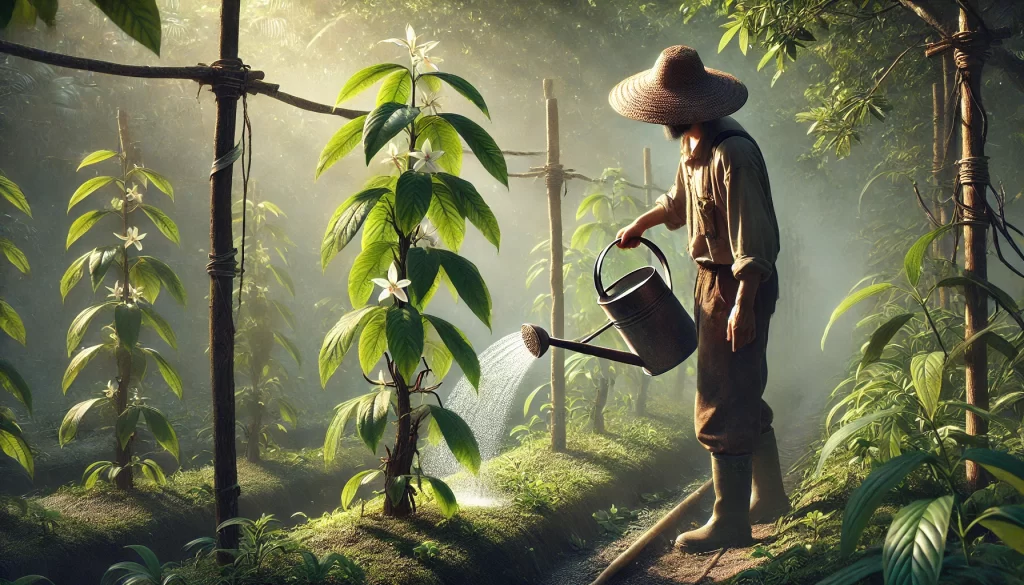
Water Requirements for Vanilla
Vanilla is a tropical plant that thrives in warm and humid environments. It requires a constant supply of water to keep the soil moist and maintain adequate ambient humidity, but without becoming waterlogged. The exact water needs can vary depending on factors such as soil type, climate, the plant’s growth stage, and the cultivation system (greenhouse or open-air). However, there are general guidelines that can help determine the appropriate amount of irrigation:
- Initial growth stage: During germination and the first few months, cuttings and seedlings need moderate watering to establish strong roots. Consistently moist soil favors root development.
- Vegetative and flowering phase: As the plant matures, its water demand increases. Flowering and pod formation are water-intensive processes, so maintaining constant moisture is crucial.
- Harvest and post-harvest: After harvest, although the plant may require slightly reduced watering, it is important not to let it dry out completely, as an appropriate balance helps with recovery and the growth of new shoots.
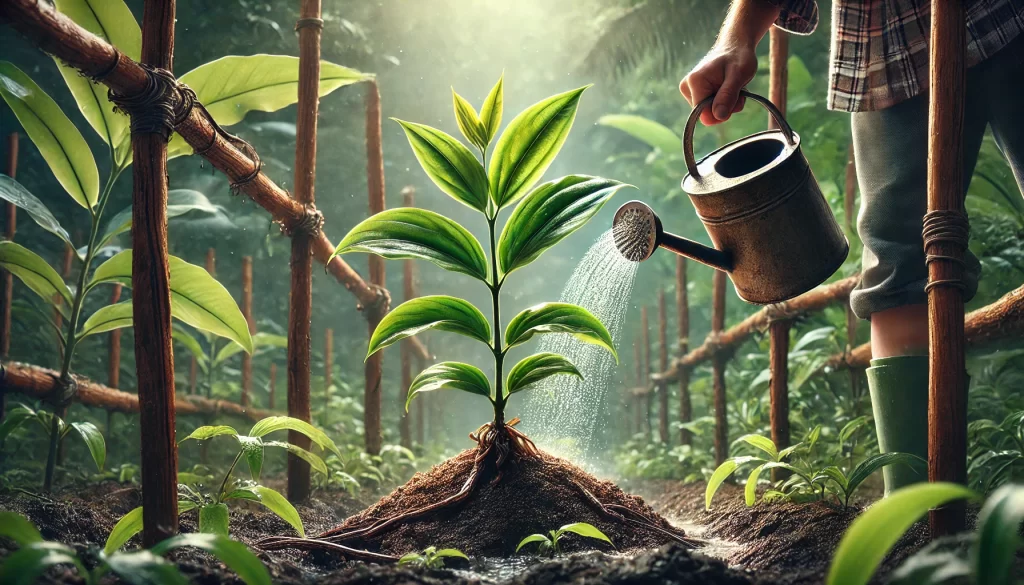
Principles for Efficient Irrigation
To optimize water use in vanilla cultivation and ensure that plants receive the necessary amount without waste, the following strategies can be adopted:
1. Soil evaluation and irrigation planning:
Conducting a soil analysis helps to understand its water retention capacity and drainage. Sandy soils drain quickly and may require more frequent watering, while clay soils retain moisture longer. Knowing these characteristics allows for designing an irrigation plan tailored to the specific conditions of the plot.
2. Implementation of appropriate irrigation systems:
- Drip irrigation: This is one of the most recommended techniques for vanilla cultivation, as it delivers water directly to the root zone, reducing losses due to evaporation and runoff. It allows precise control of the amount of water applied.
- Micro-sprinklers: Useful for increasing ambient humidity around the plants without saturating the soil. This method is especially beneficial in dry climates or during periods of low humidity.
- Automated systems: Integrating timers and moisture sensors allows adjusting irrigation according to the real needs of the soil and plant, avoiding overwatering or underwatering.
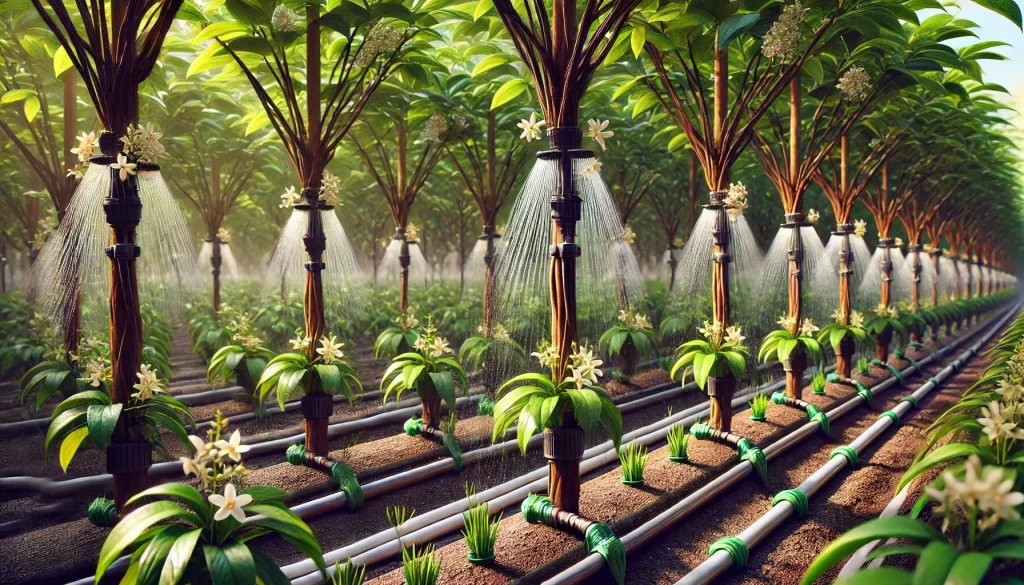
3. Continuous monitoring and adjustment:
The use of soil moisture sensors and weather stations helps monitor conditions in real time. These devices allow adjusting the frequency and duration of irrigation dynamically, responding to changes in climate and the needs of the plants.
4. Soil moisture conservation:
- Soil cover (mulching): Applying a layer of organic material around the base of the plants reduces evaporation and retains moisture. Additionally, it improves soil quality and protects roots from extreme temperatures.
- Partial shade: The placement of shade nets or planting under trees provides the necessary filtered light while reducing excessive evaporation and protecting the plant from direct sunlight.
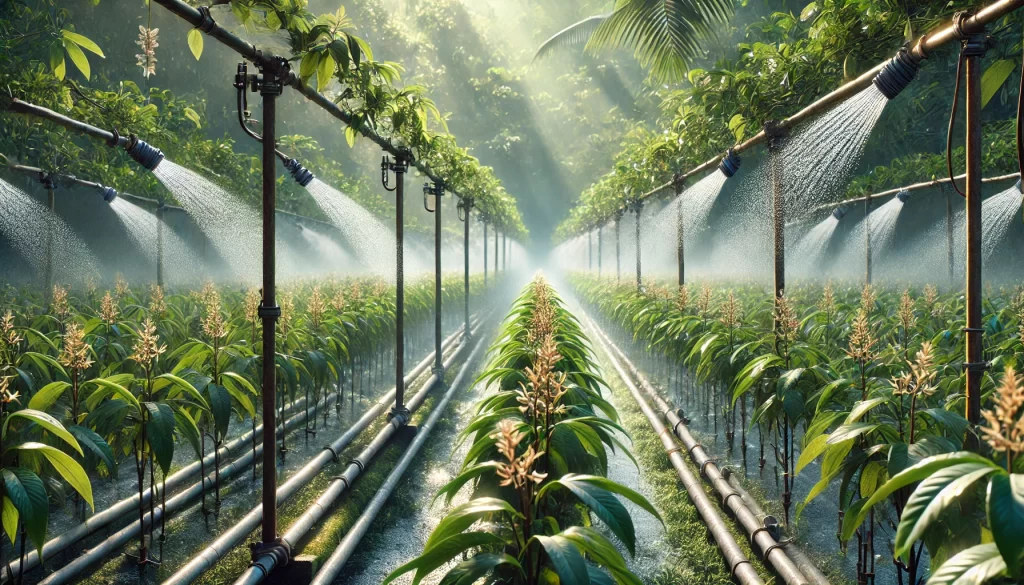
Practical Tips for Vanilla Irrigation
- Irrigation scheduling: Watering early in the morning or late in the afternoon reduces evaporation and allows the water to be better absorbed into the soil.
- Avoid waterlogging: Ensure that water penetrates deeply into the soil without remaining on the surface, as excess water can cause root rot and promote fungal diseases.
- Observe the plant: Signs of water stress in vanilla include wilted, yellowed, or fallen leaves. These symptoms indicate the need to adjust the frequency or amount of watering.
- Seasonal adjustment: During rainy seasons, reduce the amount of supplemental irrigation; in times of drought, slightly increase the frequency, always monitoring the plant’s response and soil moisture.
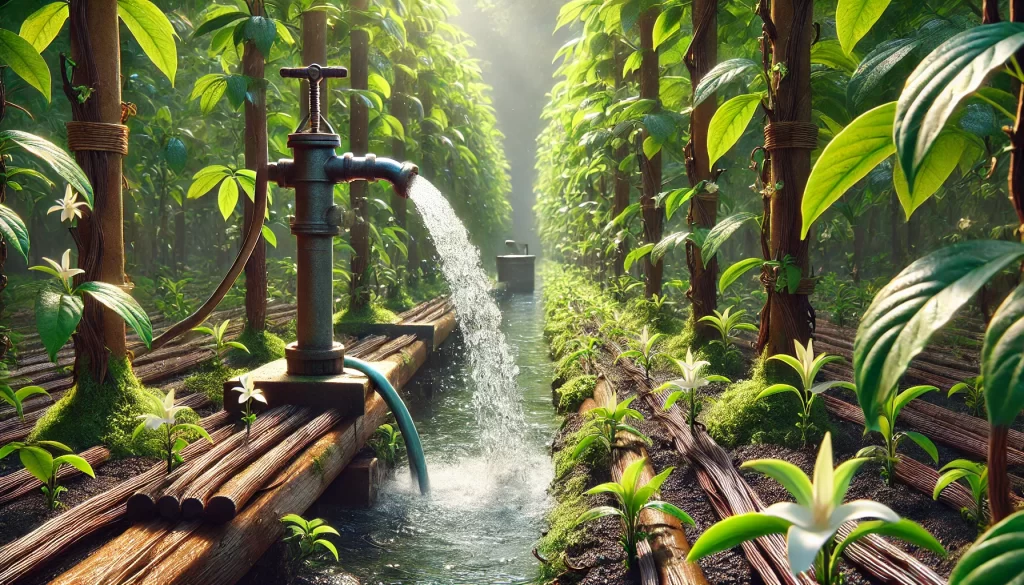
Vanilla cultivation requires careful water management to ensure a constant and adequate water supply. By understanding the plant’s water needs and applying efficient strategies — such as using drip irrigation systems, monitoring moisture, and techniques to conserve soil moisture — growers can optimize water use, improve plant health, and increase crop productivity. The key lies in constant observation, adaptation to local conditions, and the implementation of technologies that allow precise and sustainable irrigation.
 AgronoBlog – Agriculture Blog
AgronoBlog – Agriculture Blog 